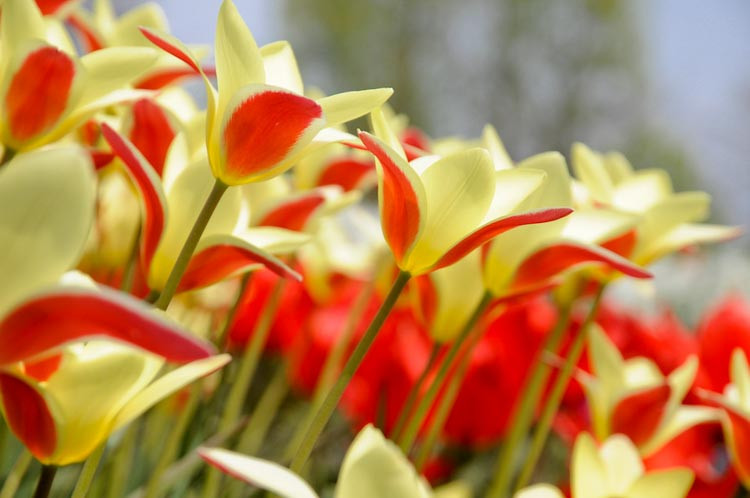Tulipa (Tulip)
A symbol of spring, tulips are the most popular bulbs and most gardeners reserve them a spot in the garden or in containers. There are currently over 3,000 registered varieties, which are divided into fifteen groups, mostly based on the flower type, size and blooming period of the tulip. Some Tulips are early season bloomers (Single and Double Early Tulips), others are mid-season bloomers (Triumph and Darwin Hybrid tulips) or late season tulips (Single and double Late Tulips, Fringed Tulips, Parrot Tulips, Viridiflora Tulips). If you love Tulips and want to have a great spring garden that blooms from early season through late, select Tulip bulbs that bloom across all three spring seasons. Exactly when the flowers bloom will depend on nature and the spring conditions in your area that year, but you should have a terrific garden that satisfies for months on end.

